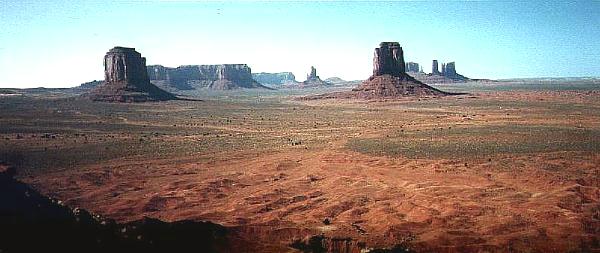
Models of succession
Lecture
graphics
- Frank Egler (1954) studied secondary succession in old fields
- He concluded that, when disturbed, soil retains large and
diverse propagule pool, representing various successional
stages
- i.e., all spp. are present from the beginning, and different
spp. assume dominance over time
- Egler called this 'initial floristics'--most species are
present initially (as seedlings or seeds), and succession
merely represents changes in dominance over time
- absence of a species from the propagule pool --> this
sp. will not be part of succession or will only become
a part very slowly
- Drury and Nisbet (1973) reviewed field evidence for relay
floristics and initial floristics models of succession, and
concluded:
- many species which characterize later successional
stages are present but inconspicuous at earlier stages
(support for initial floristics model)
- removal of annuals in first few years often enhances
performance of perennials
- similarly for forest successions, removal of early-
successional pines speeds up dominance by late-
successional hardwoods
- inhibition against self is inconsistent w/ respect to
natural selection--a sp. would not be expected to
create a situation in which it can not survive and
other spp. can
- "most studies suggest early stages can be explained in
terms of" differential growth in response to changing
resource availabilities associated w/ succession; early
plants often delay succession; later plants are present
throughout sere
- In general, Drury and Nisbet viewed succession as a process
in which plant spp. are sorted along a gradient of resources
- since each indiv. sp. has a unique optimum (of
resources) for growth or reproduction, and
- because resource availabilities change through time
(e.g., light decreases, most nutrients change),
- species replacement occurs
- Drury and Nisbet's model represented a fundamental shift
from succession as a vegetation-controlled phenomenon to a
process based on properties of individual species
- Pickett (1976) expanded Drury and Nisbet's resource gradient
concept to include competition; thus, species replacements occur
during succession as a result of changes in competitive "winners"
in a changing environment
- Connell and Slatyer (1977)
- Developed 3 models for succession, then reviewed the
literature to determine am't of evidence to support each
- Facilitation ('Model 1')
- colonists prepare environment for later successional
spp. (no implication of strategy vis-a-vis Odum)
- appears to be associated w/ primary succession
- C&S attribute this model to relay floristics
- Tolerance ('Model 2')
- modifications that early-successional spp. impose on
environment neither increase nor reduce rates of
recruitment and growth of later-successional spp.
- species sequence is solely a function of life
history
- late-successional spp. either arrive early or
late, then grow slowly
- late-successional spp. are able to grow and
reproduce despite the presence of early-
successional spp.
- C&S attribute this model (and their 'Model 3') to
initial floristics
- concluded that few situations in the literature fit
this model
- Inhibition ('Model 3')
- once early colonists secure a place and/or resources,
they inhibit subsequent invasion by other spp., or
suppress the growth of spp. invading at the same time
- when an early colonist dies, space and/or
resources are release for another individual
(could be the same or different spp. -->
succession)
- driven by negative interactions
- Nobel and Slatyer (1980)
- attempted to define 'vital attributes' of spp. that would
predict their performance during succession
- based on:
- method of arrival or persistence after disturbance
- ability to enter an existing community and then grow to
maturity
- time required to reach critical stages in the species'
life cycle
- Pickett et al. (1987) expanded on the concept of vital attributes
and developed a hierarchy of succession including causes of
succession, contributing processes, and defining factors
Previous
lectureNext lecture
